If you want to know about the staircase design or landscape garden or requirements for disabled persons in a building, please click the link.
Introduction
Organic Architecture is an architectural design philosophy that is characterized by the integration of natural forms, materials, and environments into the design of buildings. It is a design approach that seeks to create harmonious, sustainable, and functional structures that blend in with their natural surroundings. The concept of organic architecture is based on the idea that buildings should be viewed as living organisms and designed to respond to the needs of the people who inhabit them.

Brief history and evolution of Organic Architecture
Organic architecture can be traced back to the early 20th century when the ideas of Frank Lloyd Wright, an American architect, gained popularity. Wright believed that buildings should be designed to harmonize with their natural surroundings and be adapted to the needs of the people who use them. He sought to create a new type of architecture that was both functional and beautiful, and that used natural materials and forms.
Wright’s philosophy of organic architecture was influenced by the Arts and Crafts movement, which emphasized the use of traditional craftsmanship and natural materials. The movement rejected the industrialization of the building process and sought to create buildings that were unique, handcrafted, and beautiful.
The term “organic architecture” was first used by Wright in the 1930s to describe his design philosophy. He believed that buildings should be designed as a unified whole, with each element contributing to the overall design. Wright’s designs emphasized horizontal lines, natural materials, and open spaces that allowed the building to blend in with its surroundings.
Since then, the concept of organic architecture has evolved and expanded to include a range of design approaches that seek to create buildings that are sustainable, energy-efficient, and responsive to their natural surroundings. Today, organic architecture is widely recognized as a design approach that can help address the environmental and social challenges of our time.
1) Key Principles of Organic Architecture
i) Harmony with the Environment
Organic architecture emphasizes the importance of designing buildings that blend in with their natural surroundings. This involves taking into account factors such as the site, topography, climate, and vegetation. The design should respond to the natural features of the site and take advantage of natural light, ventilation, and other environmental factors to create a comfortable and sustainable living space.
ii) Use of Natural Materials
Organic architecture seeks to use natural materials in the construction of buildings. These materials include wood, stone, adobe, bamboo, and other natural materials. The use of natural materials not only creates a harmonious relationship between the building and its surroundings, but it also ensures that the building is sustainable and energy-efficient.
iii) Integration with Surroundings
Organic architecture involves designing buildings that integrate with their surroundings. This means that the building should be designed to fit in with the natural features of the site and not dominate the landscape. The building should be oriented to take advantage of views, natural light, and ventilation. The use of landscaping, such as trees, shrubs, and other vegetation, can help to create a seamless transition between the building and its surroundings.
iv) Functionality and Flexibility
Organic architecture emphasizes the importance of designing buildings that are functional and flexible. The design should respond to the needs of the people who use the building and be adaptable to changing needs over time. The building should be designed to be comfortable, efficient, and easy to use.
v) Human-Scale Design
Organic architecture emphasizes the importance of designing buildings on a human scale. The building should be designed to accommodate the needs of the people who use it, rather than being designed to impress or dominate. This means that the building should be designed with the human body and its proportions in mind. The scale of the building should be appropriate to the site and the surrounding buildings.
Overall, the key principles of organic architecture seek to create buildings that are sustainable, harmonious, and responsive to their natural surroundings. By using natural materials, integrating with the environment, and focusing on functionality and flexibility, organic architecture can create buildings that are both beautiful and functional.
2) Famous Architects and their Organic Designs
i) Frank Lloyd Wright
Frank Lloyd Wright is considered one of the pioneers of organic architecture. His designs were inspired by nature and sought to create buildings that harmonized with their surroundings. His most famous organic design is Fallingwater, a house built over a waterfall in Pennsylvania. The design of Fallingwater integrates the natural features of the site, including the waterfall and surrounding forest, into the design of the building.

ii) Antoni Gaudi
Antoni Gaudi was a Spanish architect who is best known for his organic designs in Barcelona, including Park Guell and the famous Sagrada Familia. His designs were inspired by nature and incorporated natural forms and materials into the design of his buildings. The use of curves, asymmetrical shapes, and organic motifs creates a sense of movement and fluidity in his designs.
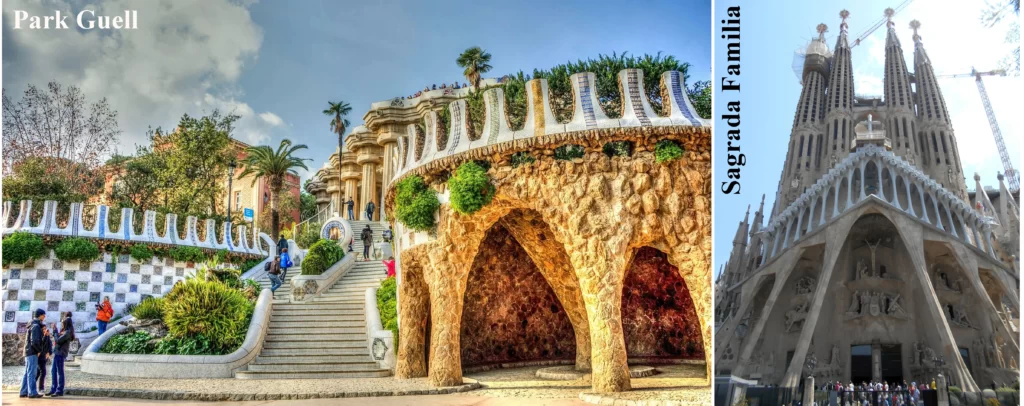
iii) Hundertwasser
Friedensreich Hundertwasser was an Austrian architect who believed that buildings should be designed to reflect the natural world. His designs emphasized the use of natural materials and organic forms. His most famous design is the Hundertwasser Haus in Vienna, a colorful apartment building that incorporates trees and vegetation into the design of the building.

iv) Buckminster Fuller
Buckminster Fuller was an American architect, inventor, and philosopher who is best known for his geodesic dome designs. His designs were inspired by the principles of organic architecture and sought to create buildings that were efficient, sustainable, and adaptable to their environment. The geodesic dome is a perfect example of organic architecture, as it is designed to distribute weight evenly and is self-supporting.

v) Kenzo Tange
Kenzo Tange was a Japanese architect who is known for his modernist designs that integrated traditional Japanese architecture with modernist principles. His most famous design is the Tokyo Olympic Stadium, which features a sweeping, curved roof that blends in with the surrounding landscape. Tange’s designs emphasized the use of natural materials and the integration of traditional Japanese aesthetics with modernist principles.
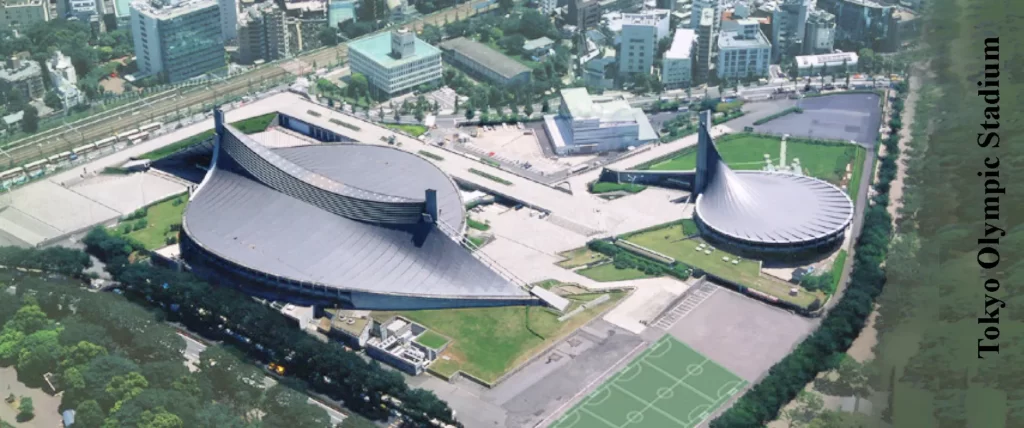
3) Examples of Organic Architecture Buildings
i) Fallingwater by Frank Lloyd Wright
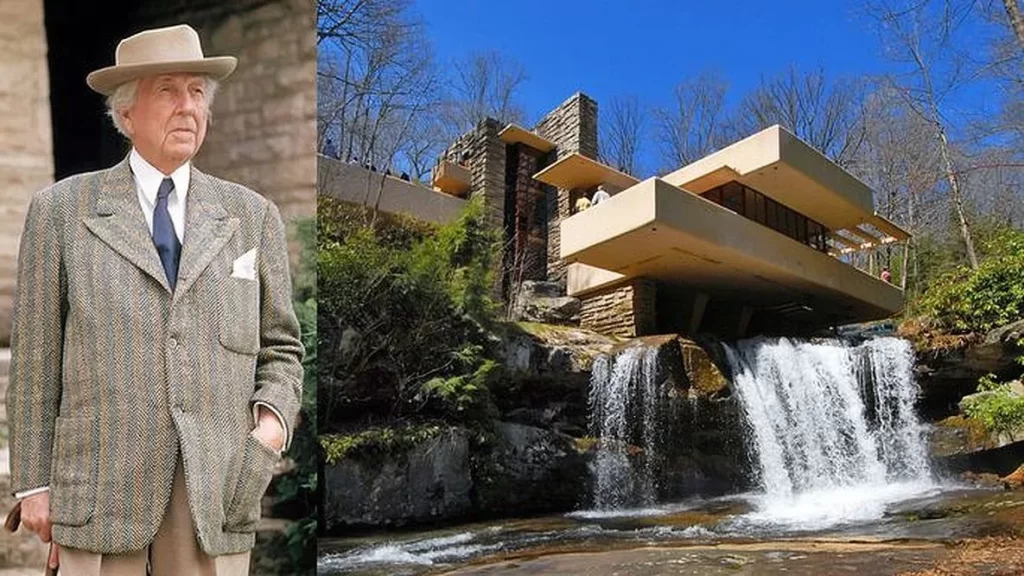
Fallingwater, located in Pennsylvania, is considered one of Frank Lloyd Wright’s most famous works of organic architecture. Built in 1935, the house was designed to blend in with its natural surroundings and integrate the waterfall and stream that run through the property. The house is built from local stone and features a cantilevered design that gives the impression that the house is floating above the waterfall.
ii) Casa Batlló by Antoni Gaudi
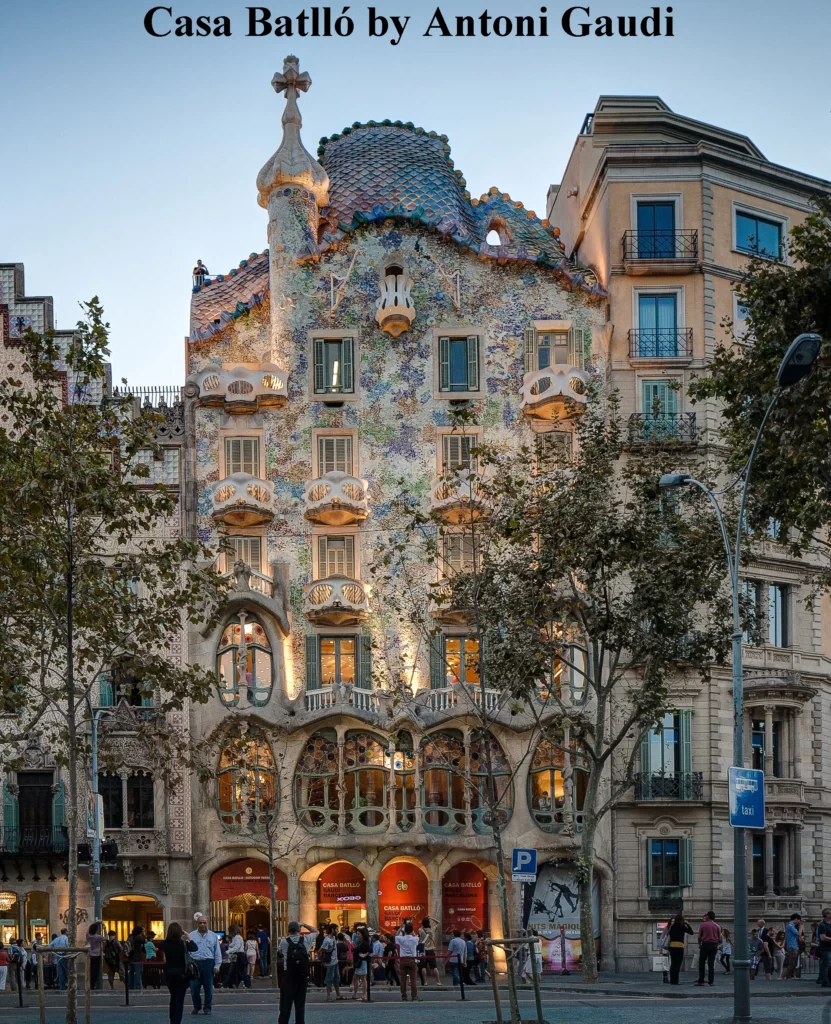
Casa Batlló is a famous example of organic architecture located in Barcelona, Spain. The building was redesigned by Antoni Gaudi in 1904 and features a facade that resembles a dragon. The building incorporates organic forms and natural materials, such as mosaic tiles and wrought iron, into its design. The rooftop terrace of the building features a series of arches that resemble the spine of a dragon.
iii) The Lotus Temple by Fariborz Sahba
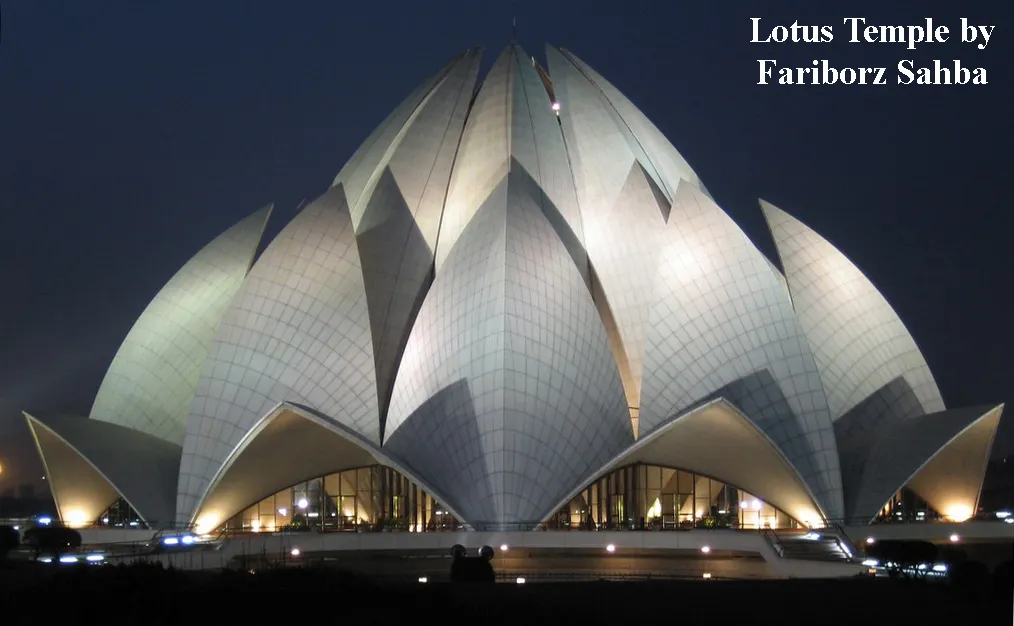
The Lotus Temple, located in New Delhi, India, is a modern example of organic architecture. The building, designed by Iranian-Canadian architect Fariborz Sahba, is shaped like a lotus flower and features 27 petals that are made of marble. The building is designed to blend in with its natural surroundings and is surrounded by nine ponds and lush gardens.
iv) The Sydney Opera House by Jørn Utzon
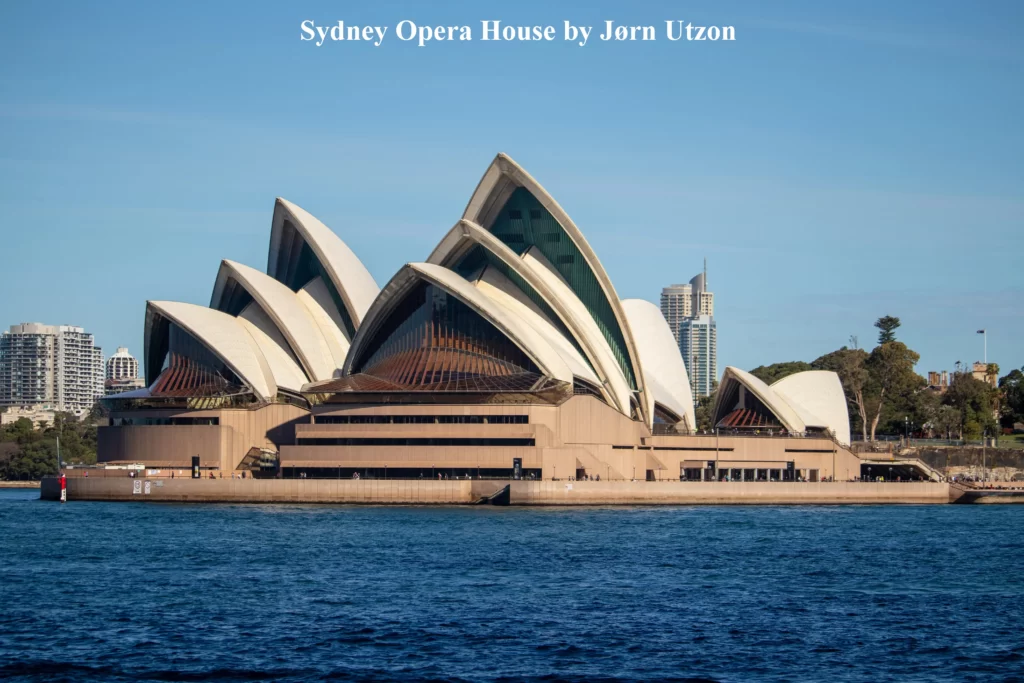
The Sydney Opera House, located in Sydney, Australia, is one of the most famous examples of organic architecture in the world. Designed by Danish architect Jørn Utzon, the building is inspired by the natural forms of the sea and the surrounding cliffs. The building features a series of curved shells that resemble sails, and its design takes advantage of natural light and ventilation.
v) The Eden Project by Nicholas Grimshaw

The Eden Project, located in Cornwall, England, is a unique example of organic architecture that incorporates sustainable design principles. The building features a series of large geodesic domes that house different biomes, including rainforest and Mediterranean environments. The building is constructed from locally sourced materials and uses passive solar design to reduce energy consumption. The building also features a rainwater harvesting system and on-site composting facilities.
4) Sustainable Features of Organic Architecture
i) Energy Efficiency
Organic architecture emphasizes energy efficiency by designing buildings that work with the natural environment rather than against it. Buildings designed using organic principles incorporate features such as passive solar design, which takes advantage of natural light and heat to reduce the need for artificial lighting and heating.
ii) Passive Solar Design
Passive solar design is an important aspect of organic architecture. This design approach uses the natural movement of the sun to heat and cool a building. Buildings designed using passive solar design principles incorporate features such as large windows, shading devices, and thermal mass to regulate temperature and reduce the need for artificial heating and cooling.
iii) Use of Local and Recycled Materials
Organic architecture emphasizes the use of local and recycled materials to reduce the environmental impact of construction. Using locally sourced materials reduces transportation costs and supports local economies. Using recycled materials reduces waste and conserves resources.
iv) Water Conservation
Water conservation is an important aspect of sustainable design in organic architecture. Buildings designed using organic principles incorporate features such as rainwater harvesting systems, low-flow plumbing fixtures, and drought-resistant landscaping to reduce water consumption.
v) Indoor Air Quality
Indoor air quality is an important aspect of sustainable design in organic architecture. Buildings designed using organic principles incorporate features such as natural ventilation systems, non-toxic building materials, and low-emission finishes to promote healthy indoor air quality.
5) Conclusion
Organic architecture is more important now than ever before due to the increasing threat of climate change and the need to reduce our environmental impact. Organic architecture emphasizes sustainable design principles such as energy efficiency, use of local and recycled materials, water conservation, and healthy indoor air quality. By designing and constructing buildings using organic principles, we can reduce our carbon footprint and create a more sustainable future.
Call-to-Action
It is important for designers, architects, and builders to embrace organic architecture in their work to promote sustainability and reduce our impact on the environment. By incorporating sustainable design principles into their work, they can create buildings that are not only aesthetically pleasing but also environmentally responsible. Furthermore, individuals and businesses can also make a difference by choosing to live and work in buildings that have been designed and constructed using organic principles. It is time to embrace organic architecture and take a step towards a more sustainable future.